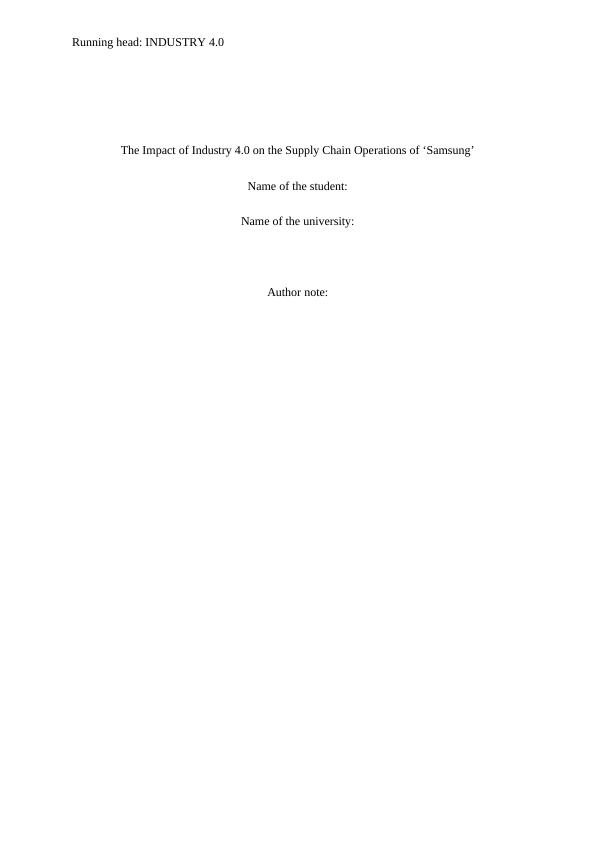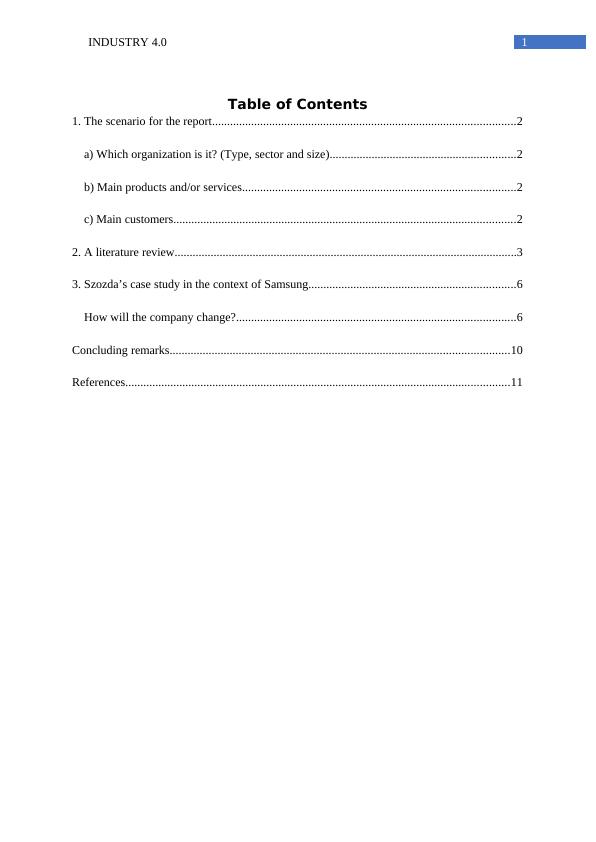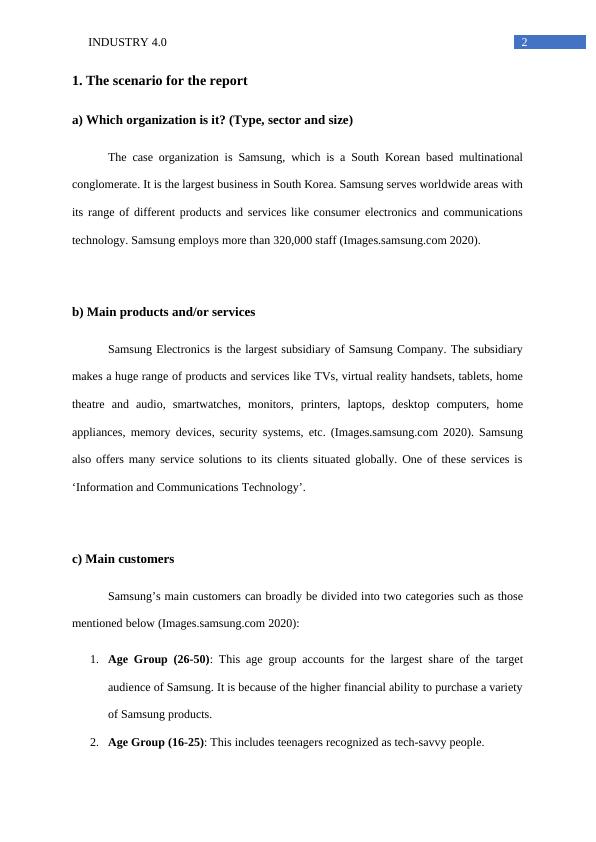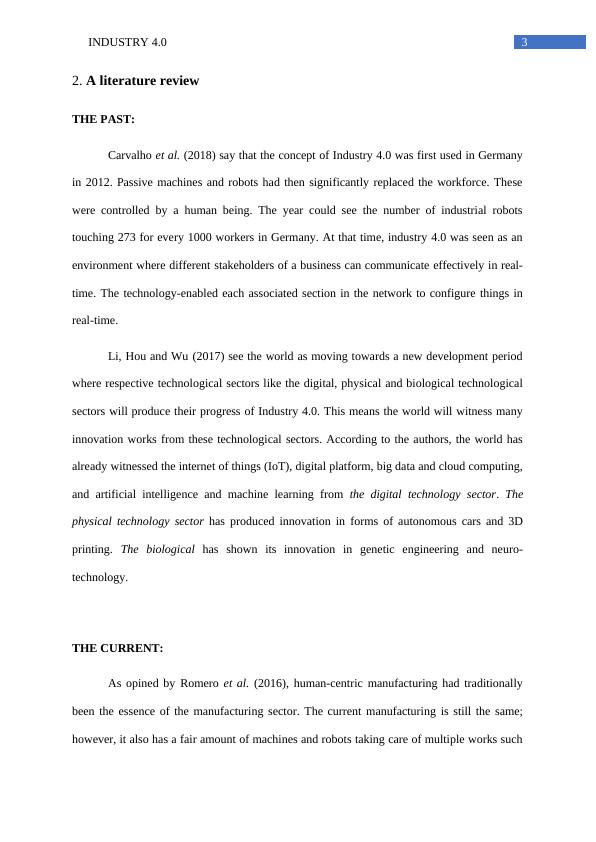Industry 4.0 Report 2022
This paper explores the challenges for modern supply chains that arise as a result of the fourth industrial revolution and the impact of Industry 4.0 on the organization of products and information flows in supply chains.
Added on 2022-08-12
About This Document
Purpose of the Assessment This assignment is designed to enable you to demonstrate an understanding of the likely impact of technology upon existing supply chain operations processes. Assessment Task You will conduct a review of the literature in the subject area commonly referred to as “Industry 4.0”. Specifically, you are to identify the origins of the concept of the Fourth Industrial Revolution and to chart its development up to the present day. Following your review, you are to critically evaluate the impact of Industry 4.0 on the supply chain operations of a company of your choice. You will be expected to illustrate your discussion with examples from academic journals, the trade press and other authoritative sources.
Industry 4.0 Report 2022
This paper explores the challenges for modern supply chains that arise as a result of the fourth industrial revolution and the impact of Industry 4.0 on the organization of products and information flows in supply chains.
Added on 2022-08-12
End of preview
Want to access all the pages? Upload your documents or become a member.




